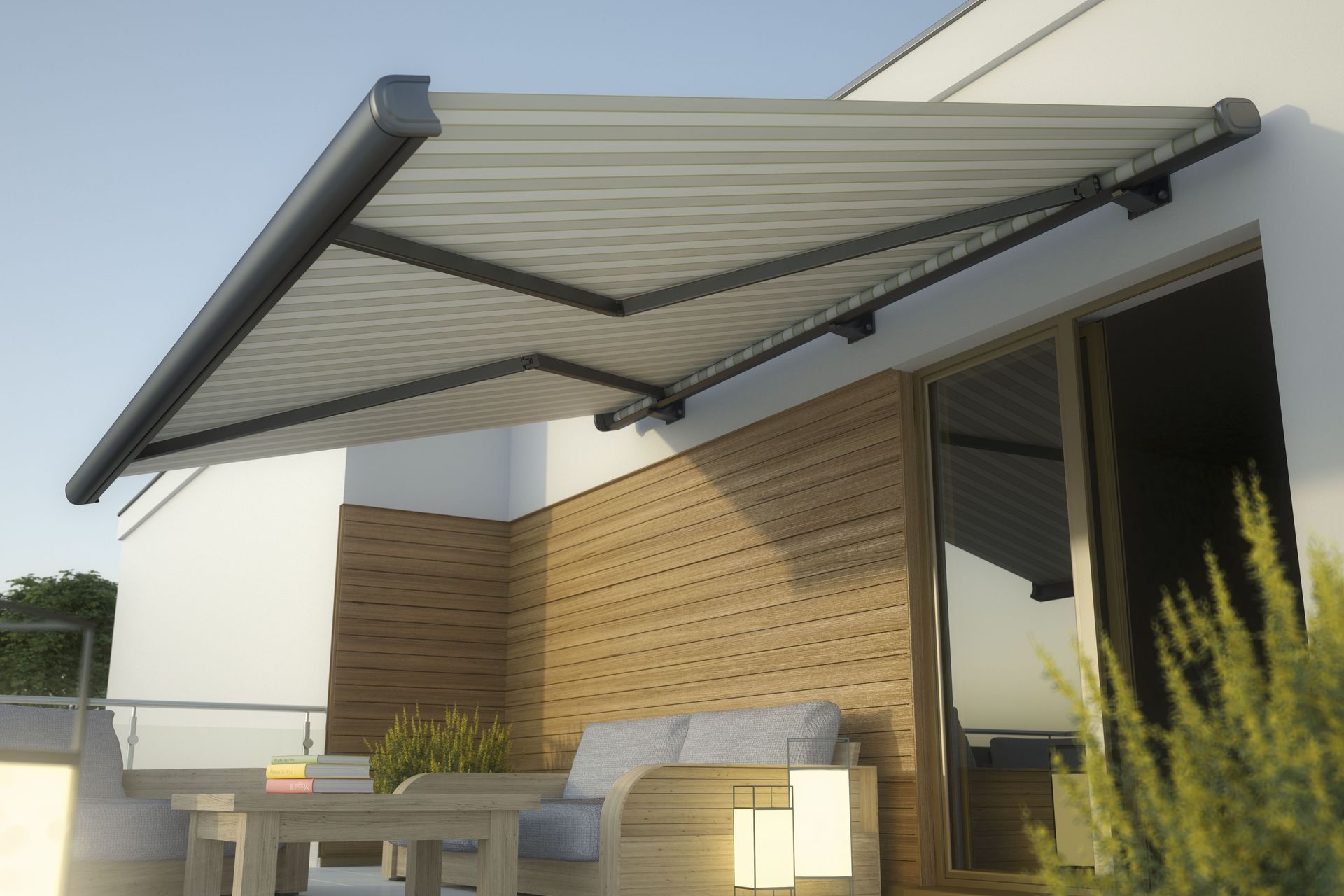Retractable awnings - pros and cons, costs and more

Retractable awnings, also known as outdoor and patio awnings, are a growing trend as an outdoor shade system in Australia. They’re versatile, have a number of different price points and can add style to an outdoor entertaining area. They also, of course, provide shade from the harsh Australian sun. With the latest technology used in electric and motorised retractable awnings adding even more features, they make a compelling case for any homeowner.

What are the advantages of retractable awnings?
Retractable awnings have many advantages that have seen them win fans across the world.
Firstly, retractable awnings can be fitted with outdoor blinds, providing an additional layer of protection from the elements. Outdoor blinds can offer extra protection from the sun, wind, and rain, while also adding an element of privacy to your outdoor space. This added feature makes retractable awnings a versatile and practical solution for any outdoor area. Additionally, retractable awnings are highly customizable and can be designed to fit any space, making them an excellent choice for both residential and commercial settings.
They are also relatively easy to install, even without the help of a professional tradesperson, saving you what can sometimes be a big upfront cost. This saving is even greater when compared to other shade systems like louvre roofs.
A well-placed awning not only offers outdoor shade but can help keep the sun out of your indoor space, cooling your house during the summer months.
Different types of awnings also offer other unique benefits as well. Extendable folding-arm awnings provide a lot of flexibility in terms of shading an area. Most are able to be retracted and extended to different lengths which are great for adjusting at different times of the day.
Wall-mounted or fixed awnings don’t take up any floor space at all allowing for a better, free-flowing area around it. When fully retracted, wall mounted awnings are practically and visually discreet, taking up very little wall space as well.
Motorised or automated awnings are intuitive and easy to use, operable from a remote control, via an automated system or in some cases, by smartphone app.

What are the disadvantages of retractable awnings?
Because most retractable awnings are fixed, they do require an appropriate outdoor space in which they can be attached. In some cases, the installation just isn’t possible meaning a freestanding model is the only choice. Those who don’t want a freestanding model will need to seek other alternatives.
Retractable awnings can sometimes be a concern for those exposed to strong winds or living in high-wind areas. Some awnings are rated to withstand winds of up to 40kmph or categorised up to level 6 on the Beaufort Wind Scale. This means it is possible to find models that can maintain their integrity in quite challenging conditions.
Some advanced electric awnings also have wind sensors that will automatically retract in cases of high wind, giving owners a bit of peace of mind if they happen to venture out with the awning up.
Others also worry about repair costs for motorised retractable awnings in particular due to their mechanical and electrical components. Most reputable suppliers have warranties and fairly good support in place to again help alleviate such concerns.
Are there different types of retractable awnings?
As we’ve already touched on, there are indeed different types of retractable awnings available on the market today. The main difference between retractable awnings is usually the method of operation. A manual awning is extended and retracted by hand by using a hand crank. A motorised awning is extended and retracted with the push of a button via a remote, automation system or smartphone app. They can also come as wall-mounted or freestanding options.

What materials are retractable awnings made of?
Awnings are generally made with polyester, acrylic or canvas materials. They are also often laminated or coated to increase their longevity and prevent fraying. The best material to use will depend on a number of factors including the location of the site, how often the awning will be used and the size of the awning.
Most awning materials are either waterproof or at least water-resistant, obviously being designed for outdoor environments. It’s always advised to look carefully at the warranty of the material to ensure it has the benefits you’re after. For example, in the fine print, you might find that some materials may not provide UV protection. Others may not be suitable for coastal locations due to salt spray which is extremely important if you live by the beach.
How much do retractable awnings cost?
Retractable awnings vary greatly in price, depending on the size and quality of materials. There are also differences between fixed and freestanding models, and how they are operated, for example, manual awnings almost always cost less than automatic or electric versions.
On average, retractable awnings can cost anywhere between $750 - $2,000 in Australia plus labour costs if required.
Related article: Choosing the best outdoor shades for your home
Choose the best retractable awnings for your home
As you can see there is an extensive range of choices for retractable awnings covering a wide range of budgets and outdoor living environments. When done well, they can provide much-needed shelter from the elements, add an element of style and increase the value of your home.
Related article: Choosing the best outdoor shades for your home
